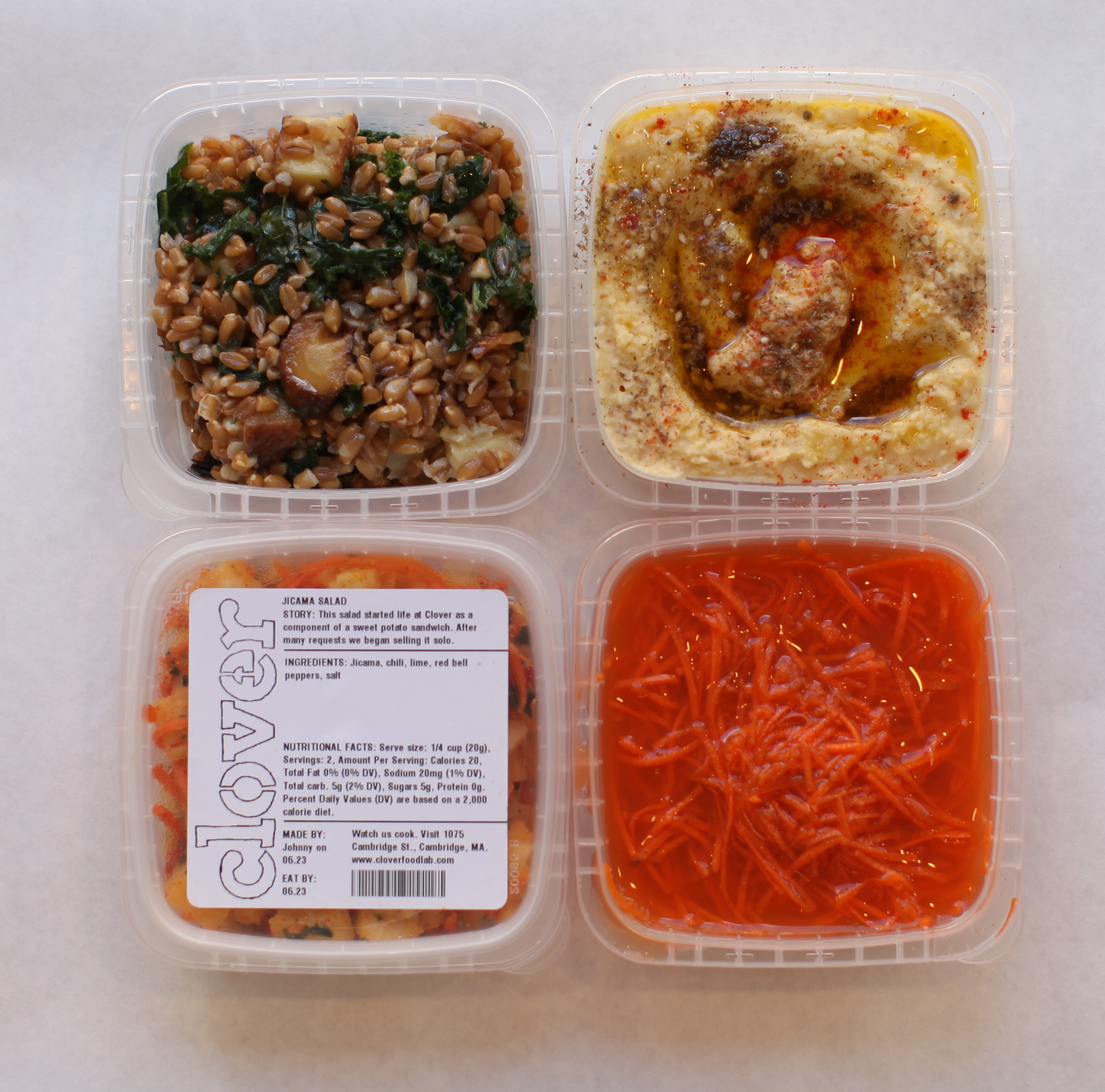It’s embarrassing how long I’ve been working on our packaging for Whole Foods. I think we started thinking about this when they first approached us over 2 years ago. We’ve hired an outside firm, and I really didn’t like their process or output. We hired an in-house designer, that didn’t work out either. Lucia started trying some different things, including writing with white markers directly on plastic packages.
And now we’ve arrived at something I’m really excited about. It’s the collision of a certain Clover design aesthetic that you all know, aspirations to do packaged food different and better, and new technology that allows it all to happen.
On the aesthetic front we wanted the packaging to be about the food, in the same way we want our restaurants to be about the food and people. We found this really beautiful super clear plastic from a Canadian packaging company called IPL. It’s BPA-free and recyclable. We decided early on that compostable wouldn’t be valuable for this because most people don’t have access to commercial composting and most of the food will be eaten at home. So instead we’re buying these pretty expensive containers that look really beautiful and are super durable. We’re hoping people reuse a bunch at home then recycle when done.
We have some audacious goals. Our primary goal for our products at WFM is the same as that for our products at Clover restaurants: we want you to help meat eaters fall in love with vegetables. Currently most of the “fresh pack” items have a 10 day shelf life. That’s not going to work for us. We’re barely comfortable with 1 day. So we’re working really closely with WFM to make sure we get them deliveries daily and that we manage inventory to keep the shelf life really short. We’re probably going to go with a 48 hour sell-by date which keeps quality high but allows a single day overlap which will reduce waste. We change our menu daily at the restaurants because we know vegetables taste best when they are at the peak of their season. We’re going to carry this same approach to Whole Foods. This might not seem like a big deal, but the level of change we’re managing requires completely new tech systems. We can’t just develop 18 items (SKUs) and the print up FDA-labels for those and sell them for years. Instead we have to have a system that adapts and changes day to day.
So we started working with this company ItemPath a year or so ago. They have a cloud-based item tracking system that can print to wifi label printers. They’re the only one doing this that we know of in the world. They’re product is sort of beta, but we’ve been working closely with them and they’ve been making it work for us. We bought a high-resolution thermal printer from Zebra. And I ordered some die-cut thermal labels. Thermal printers activate chemistry that is embedded in the sticker paper and “turns on” the dye to make an image. There isn’t any transfer of ink. So it’s really stable in moisture, in the fridge, etc. And we can literally change the label design from one label to the next. Meaning we can include real-time information on the labels, like who made this batch, ingredient details specific to this item, stories we want to share, etc. It’s really amazing.
If you see me over at the HUB bent over a gigantic grey machine say hi and I’ll show you what we’re up to.


